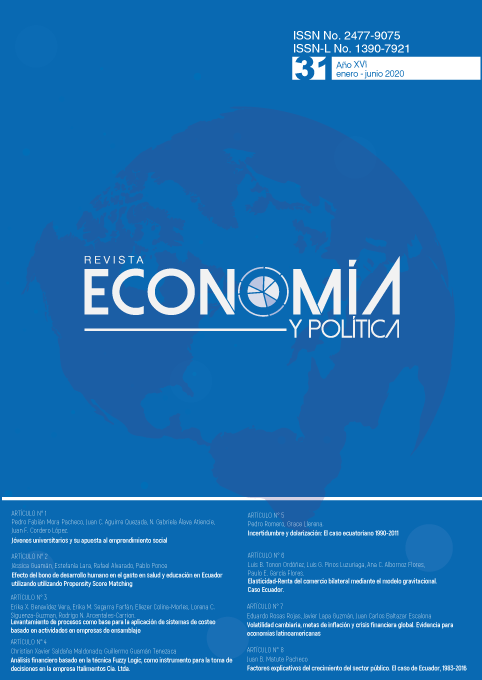Analysis of the impact of credit for productive initiatives delivered to the beneficiaries of the human development bond. Case study
DOI:
https://doi.org/10.25097/rep.n31.2020.01Keywords:
Protección social, bienestar social, desarrollo humano, emprendimientos productivos, créditoAbstract
The purpose of this article is to analyze the perceptions of people who have accessed productive loans and are beneficiaries of the human development bonus. The study takes as a geographical reference the rural area of the province of Pichincha, taking a representative sample for the analysis of the opinions of this population group in relation to the socio-economic impacts of credit in improving their income and living conditions, considering In parallel, the complexity of the administrative procedures, time of delivery of resources, technical advice and follow-up provided, as well as, the recommendations made by the users of the credit.
The research contributes with greater elements of judgment to the government and institutions related to the granting of credits for productive initiatives in Ecuador and countries of similar situation, allowing defining actions tending to the continuity and improvement of them according to the qualification provided to the beneficiaries.
Downloads
References
Armas, A. (2005). Redes e institucionalización en Ecuador. Bono de Desarrollo Humano. Retrieved from http://repositorio.cepal.org/bitstream/handle/11362/5796/S05828_es.pdf?sequence=1
Artaraz, M., & Empresariales, E. U. De. (2002). Informes, 2.
Barreno, L., López, H., López, M., & Gonzales, G. (2018). La precarización salarial en la actividad agrícola y su incidencia en la política de economía popular y solidaria en el Ecuador, XLI, 47–67.
Calvas Chávez, G. V. (2010a). Evaluación de impacto del bono de de
Downloads
Published
How to Cite
Issue
Section
License
The Journal declines any responsibility for possible conflicts derived from the authorship of the works that are published in it.
The University of Cuenca in Ecuador conserves the patrimonial rights (copyright) of the published works and will favor the reuse of the same ones, these can be: copy, use, diffuse, transmit and expose publicly.
Unless otherwise indicated, all contents of the electronic edition are distributed under a Creative Commons Attribution-NonCommercial-ShareAlike 4.0 International License.






